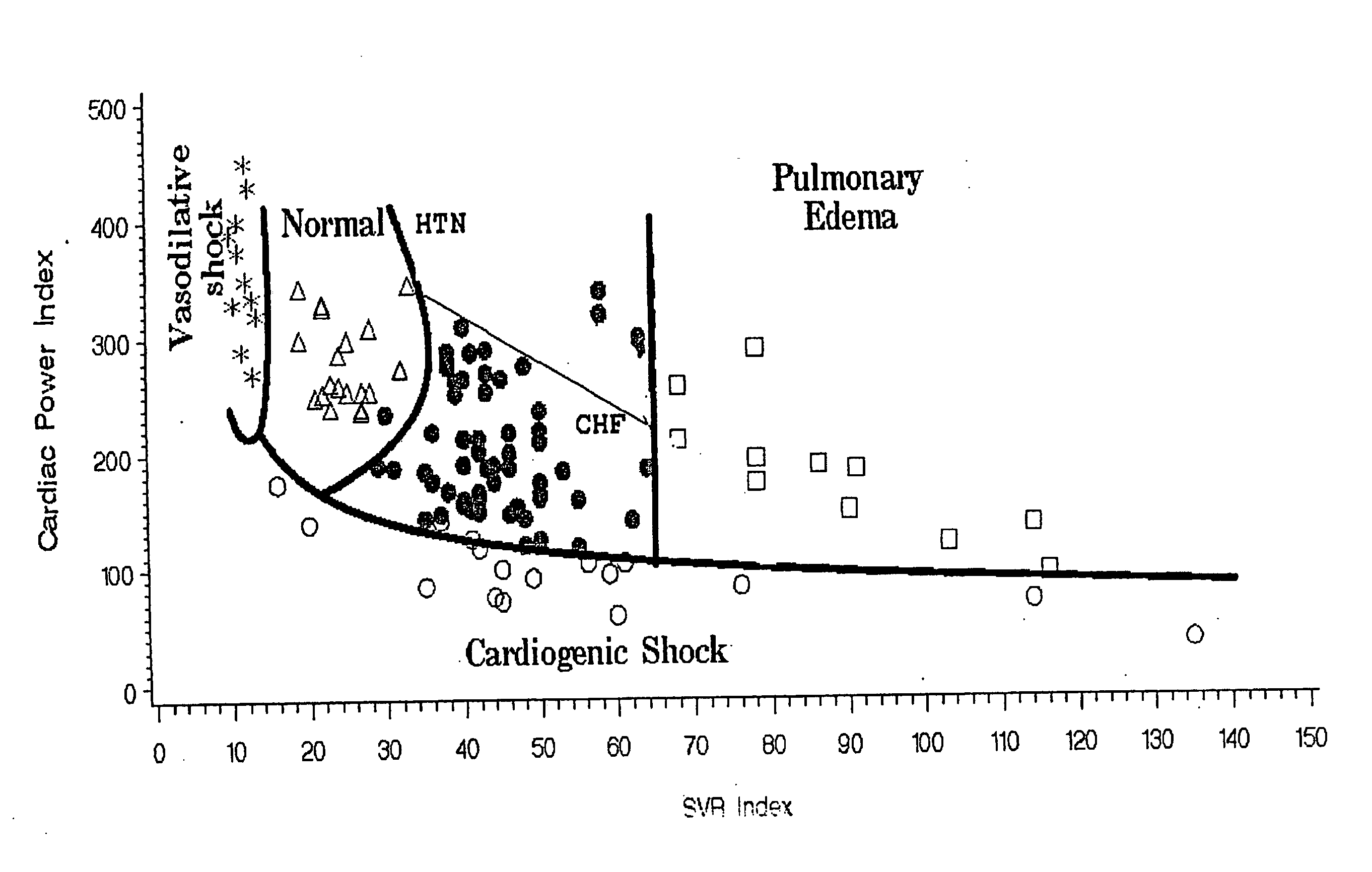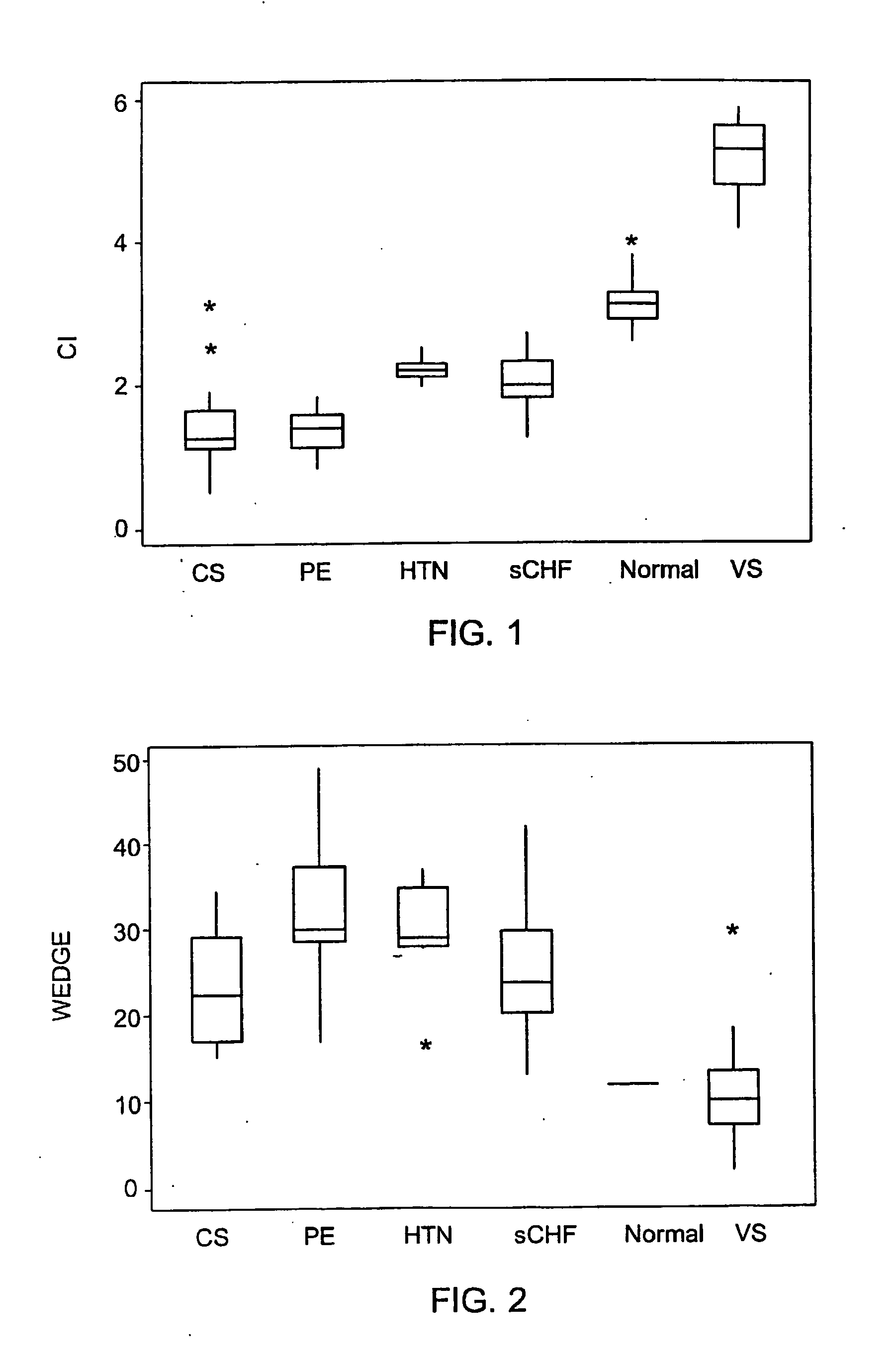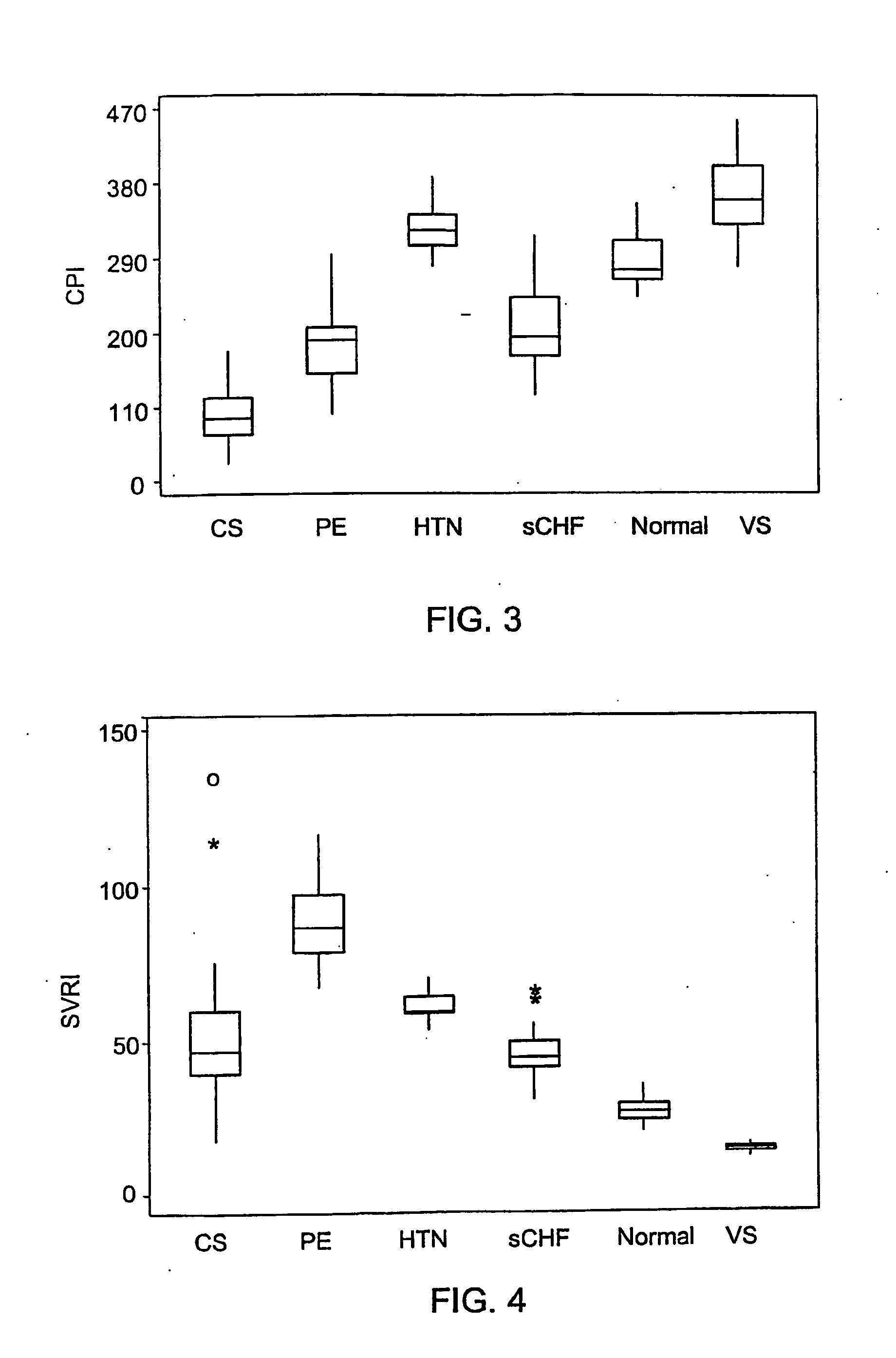Device for determining hemodynamic state
a technology of hemodynamic state and device, which is applied in the field of non-invasive medical devices, can solve the problems of low map, low diagnostic value, and low cardiac index or systemic vascular resistance index, and achieve the effects of significant therapeutic implications, easy monitoring, and assessment of the effectivity of treatmen
- Summary
- Abstract
- Description
- Claims
- Application Information
AI Technical Summary
Benefits of technology
Problems solved by technology
Method used
Image
Examples
example 1
Determination of Hemodynamic State by Graphic Means
Patients and Methods.
[0147] Hemodynamic data was obtained in patients undergoing right heart catheterization.
Inclusion Criteria:
[0148] All patients who were diagnosed by conventional clinical criteria (see below) as having systolic CHF (sCHF), hypertensive crisis, acute pulmonary edema (PE), vasodilative shock (VS) or cardiogenic shock (CS) were included.
Exclusion Criteria:
[0149] Significant valvular disease, significant brady- or tachy-arrhythmias or renal failure (creatinine >2.5 mg / dl).
Clinical Diagnosis Criteria:
[0150] 1) Systolic CHF: Patients admitted for invasive hemodynamic assesment due to CHF exacerbation, defined as clinical symptoms and signs of CHF, NYHA class III-IV, accompanied by EF <35% on echocardiography and not treated with any oral drugs for 6 hours or intravenous drugs for the last 2 hours; not fulfilling the criteria for cardiogenic shock or pulmonary edema.
[0151] 2) Pulmonary edema: patients admi...
example ii
Determination of Hemodynamic State using Statistical Analysis
[0171] The manner in which the data processing and analyzing unit of the device may analyze and classify the paired value of the subject will be illustrated by means of the example given below. However, it will be clear to the skilled man of the art that other embodiments using other statistical methods of analysis are possible.
1. Data
Statistical Methods:
[0172] The five clinical groups were compared with regard to all parameters using a one-way Analysis of Variance. The Ryan-Einot-Gabriel-Welsch Multiple Range Test was used for pair-wise comparisons between the groups, while Dunnett's T test was used to compare all groups to the healthy controls.
[0173] A one-sample t-test was performed to compare mean Wedge pressure in each group to the wedge pressure of normal people (less than 12 mmHg).
[0174] In order to determine the usefulness of the hemodynamic parameters to discriminate between the clinical syndromes, ROC cur...
example iii
Determination of Cardiac Power and Vascular Resistance for the Diagnosis of Heart Failure and Myocardial Ischemia
[0190] The purpose of the present study was to determine the specificity and sensitivity of a Dobutamine stress test as a screening method for the diagnosis of congestive heart failure (CHF) or myocardial ischemia, using one embodiment of the device of the invention.
[0191] Methods: The Dobutamine stress test was performed by the conventional protocol of the Dobutamine-Echocardiographic stress test. At baseline and at the end of each stage mean arterial blood pressure (MAP) and CI were non-invasively measured using the device of the invention. Cardiac contractility was estimated by the cardiac power index (Cpi) which was calculated as CI*MAP. Systemic vascular resistence index (SVRi) was calculated as MAP*0.9 / CI.
[0192] As illustrated in FIG. 7, the paired values of a normal subject would be expected to act as indicated by arrow 50. Criteria for the diagnosis of myocardi...
PUM
 Login to View More
Login to View More Abstract
Description
Claims
Application Information
 Login to View More
Login to View More - R&D
- Intellectual Property
- Life Sciences
- Materials
- Tech Scout
- Unparalleled Data Quality
- Higher Quality Content
- 60% Fewer Hallucinations
Browse by: Latest US Patents, China's latest patents, Technical Efficacy Thesaurus, Application Domain, Technology Topic, Popular Technical Reports.
© 2025 PatSnap. All rights reserved.Legal|Privacy policy|Modern Slavery Act Transparency Statement|Sitemap|About US| Contact US: help@patsnap.com



